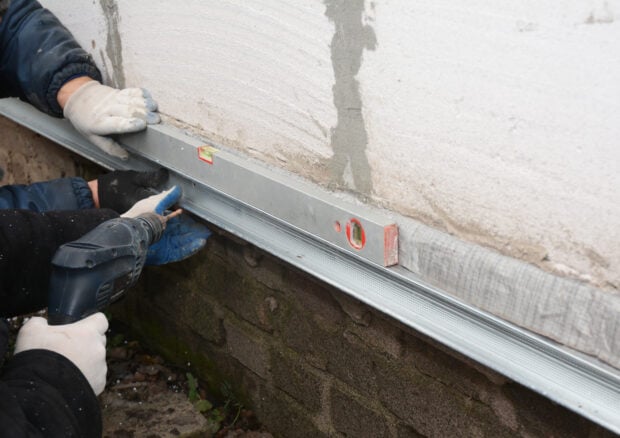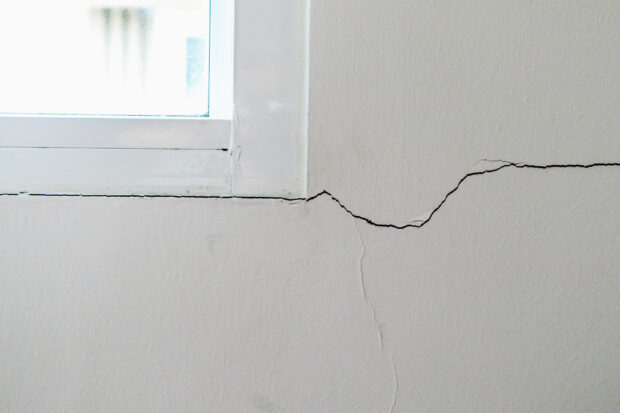Homes remain a major investment, thus it’s prudent to keep inspecting and making renovations, tweaks, and other repairs to keep it in good shape. For instance, a faulty foundation is not good for the stability of the home.
Weak or vulnerable foundations may be susceptible to bad weather conditions such as storms, floods, extreme temperatures, icy conditions, or even earthquakes. On the other hand, extreme weather conditions are also liable for weakening foundations.

How can you then diagnose your building for potential vulnerabilities? Listed below are some of the signs it’s time for a foundation repair:
1.Cracks On The Walls, Floor, And Other Parts Of The House
If you notice cracks inside the house either on the floor or the walls, these could be a sign of trouble. Any major cracks either on chimneys or verandahs along the house could also indicate you need to investigate further. You can utilize these tips or consult a building contractor to help investigate further.
Listed below are some of possible remedies or corrective measures you could take:
- Minor Cracks – Before cracks develop into huge ones, small incisions occur. If treated, it could save you thousands of dollars in repair and renovations. You could call a contractor to help you seal off those minor cracks.
- Major Cracks – This could be the result of a neglected house or a bad storm. To repair major damages, an engineer or contactor must conduct repairs to prevent a possible collapse.
Regular inspection of your home can help you avert major damage. Repairing cracks early on can also help reduce repair costs.
2.Investigate Dumpy Conditions In Basement Rooms Or Smelly Rooms
If you are met with dumpy conditions in certain rooms, it could be an indication that underground water is leaking onto the floor. Signs could include the presence of mildew and general discoloration of walls and floors. This can be hazardous to your health and requires an investigation.
Some of the possible reasons that may cause this include:
- Blocked gutters leading to water leaking onto floors and walls
- Weak or dilapidated waterproofing that leads to water seepage
- The plumbing system could be faulty
To solve such an issue, you can contact Oriole Basement Waterproofing, who are technical experts in that field.
3.Bowed Walls
Apart from getting cracks, walls can also lose their shape. Bowing of either the partition or exterior walls could mean the foundation is on the move. Bowed walls are caused by soil that exerts excess pressure around your property. This could be due to the soil having absorbed excess moisture. Bowed walls are also caused by bad drainage, stagnant water, and poor waterproofing elements in your home’s foundation.
However, you should be careful not to confuse bowed walls with a faulty paint job as they may have similar signs.
To remedy the situation, wall plate anchors are best recommended by engineers and construction teams. With the use of steel plates, walls are returned to their normal shape.
4.Sinking Floors And Roofing
If the soil holding the foundation is not strong, the building can curve inward. Sagging floors and roofs can be tell-tale signs. Keep in mind to monitor whether the floor is slanted so you’d know if your home’s foundation needs to be repaired.
With the help of a professional, you can do the following:
- Fix beams or add frame reinforcements
- Perform a sistering operation to enforce the foundation
- Solve any moisture problems in the house
Sagging floors can be repaired, but they require a considerable investment and effort. It is therefore important to ensure foundation beams are well installed to avoid any future mishaps.
5.Doors That Stick To The Floor Or Fail to Open Properly
When your door fails to open or close properly, it could be a sign of foundation issues. The doors may seem larger or, in the case of French doors, they may fail to meet.
Doors may warp due to moisture brought in by defective basement waterproofing. On the hand foundation pushing and pulling due to temperature changes may make it to sink or expand.
Consulting engineers and contractors can help you provide remedies to such an issue.
6.Fittings Separated From Walls
When there is problem in the foundation, spaces between cabinets, built-in shelves, and other fittings could develop. This is due to gradual shift of the wall or bowing. Quickly consult an engineer to help diagnose the problem.
Takeaways
Over time, a home’s foundation may become weak due to natural forces, poor workmanship, and deteriorating building components.
Diagnosing these issues requires keen and regular checkups of areas such as walls, floors, the ceiling, and any irregular activities that may occur within your property. With competent building professionals, you can inspect the building and solve the issue to help save it.




